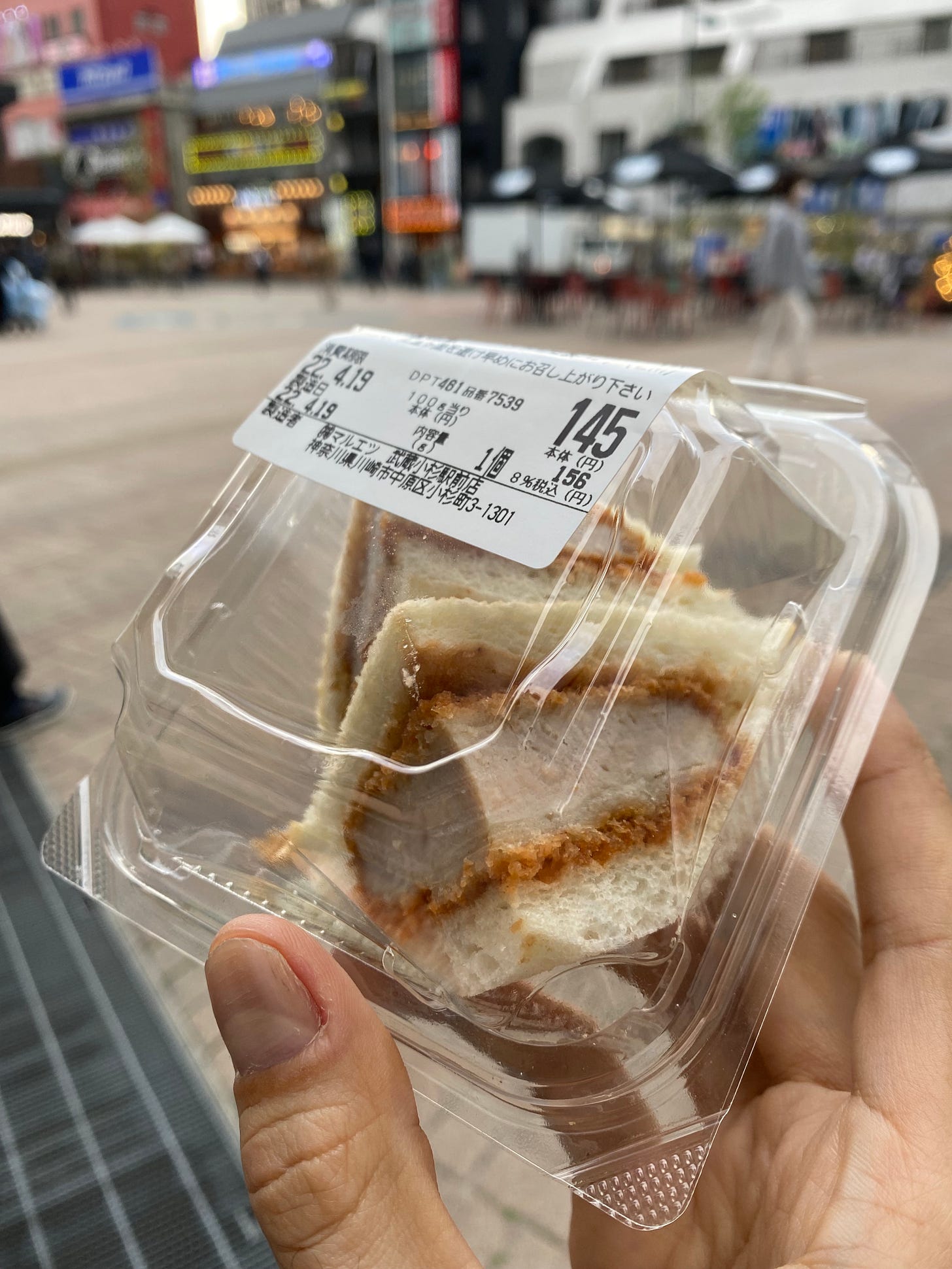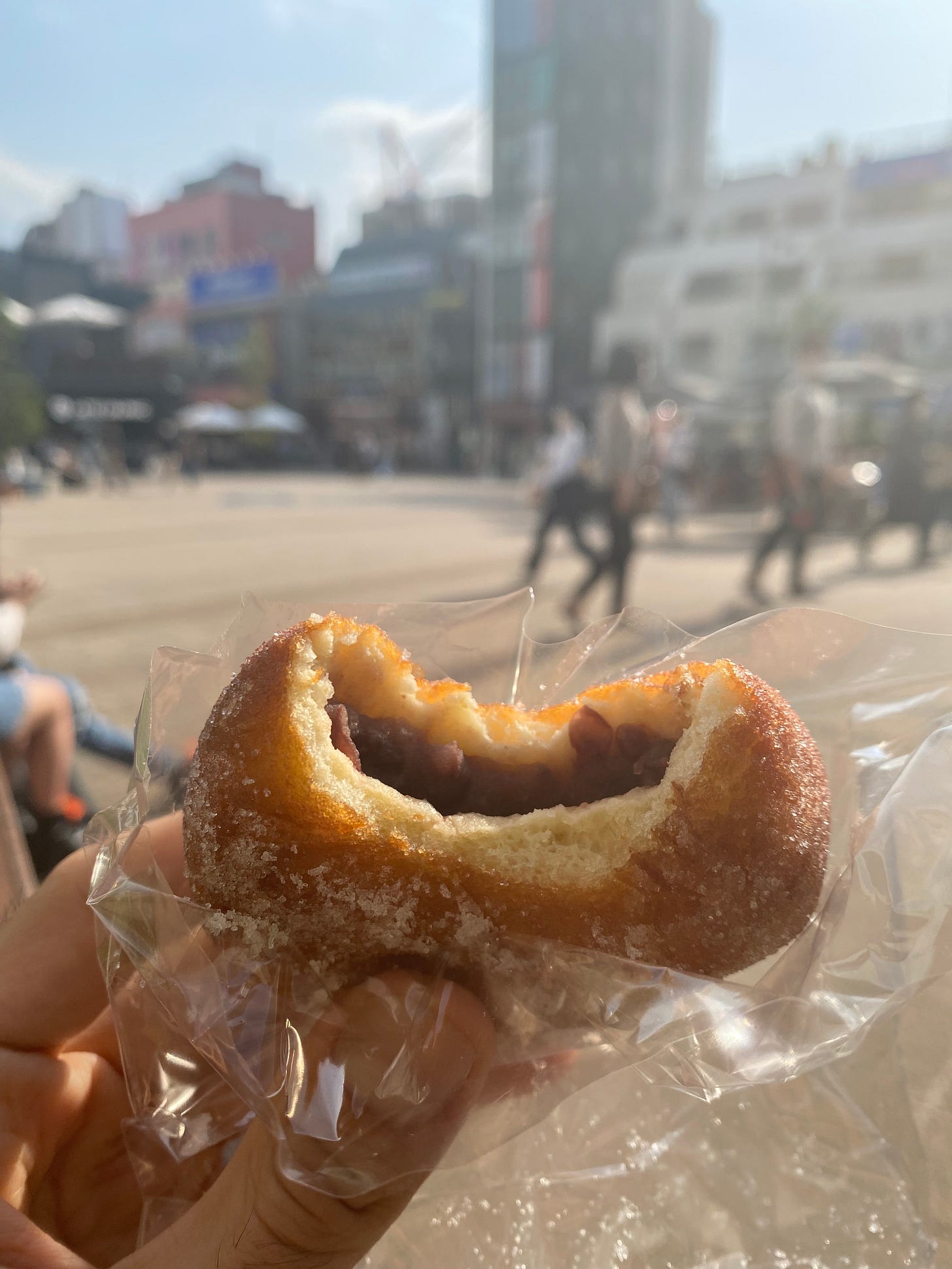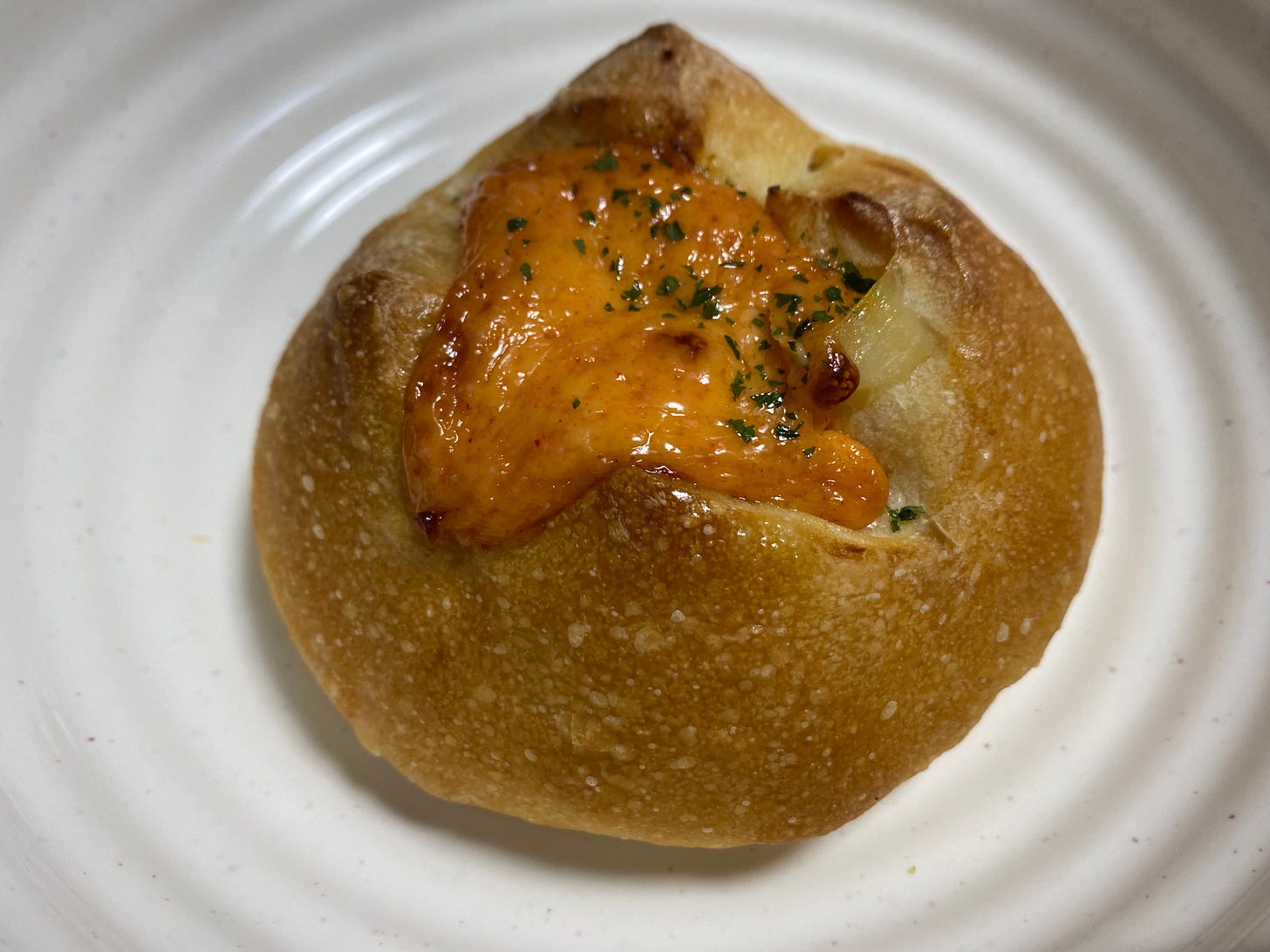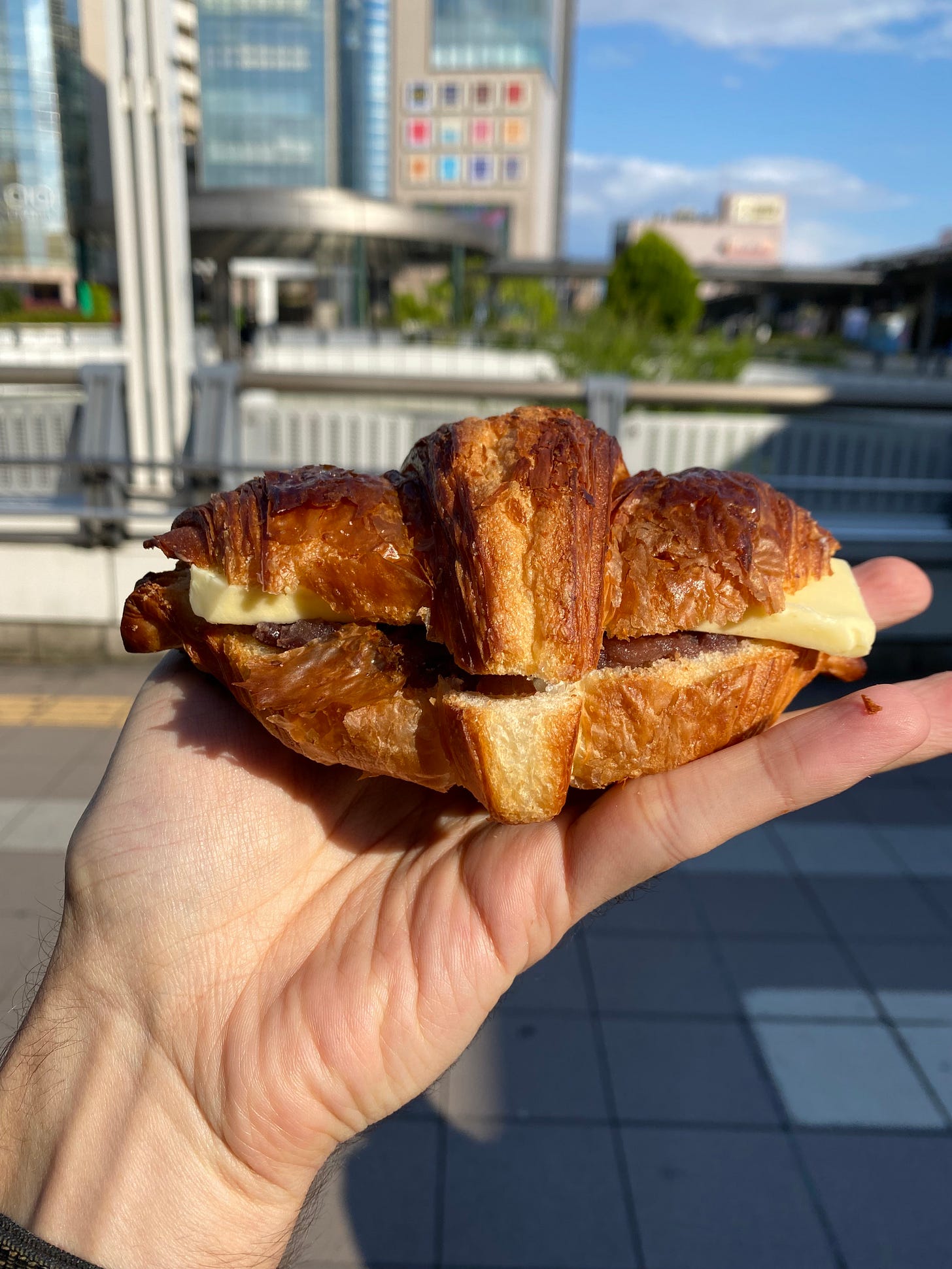菓子パン
Kashipan, kashipan as far as the eye can see - How to Japanese - May 2022
This is How to Japanese, a monthly newsletter with something about Japan/Japanese, something about booze, and a dash of いろいろ.
日本・日本語: Kashipan
For whatever reason, I’ve been almost constantly hungry for the past two and a half months. Hunger strikes regularly at 11:00am and 2:00pm.
I can probably blame this on the highly routinized life I’ve been living. I started mixing it up more recently, but I was basically getting by on nattō for breakfast and ham sandwiches for lunch for a while: I am nothing if not consistent. I guess this just hasn’t been enough, especially since I’m walking about twice as much as I did in Chicago. Here’s what the six months before coming to Japan looked like:
And here’s change since arrival:
It’s even starker if I isolate the last month:
My solution to morning hunger has been to add sesame tofu to my morning breakfast routine (highly recommend the packs that include miso sauce). My solution to afternoon hunger was to keep a bag of almonds on me—a Morales family tradition—to stave off any intense pangs.
But I’ve also been tempted regularly by 菓子パン (kashipan). This literally translates as “sweet bread,” but I think you have to leave is as kashipan for the same reason pan dulce should stay pan dulce. These are a unique category of pastries, one that I didn’t fully appreciate until reading Itō Hiromi’s collection of short essays 『ウマし』 (Umashi). (I’d probably render this title as “Delights” in English based on the content.) Here’s the line that really revealed for me the secret to kashipan:
不思議だ。日本のどんな菓子パンにも炊き立てご飯のような、湿り気のある、軽い歯ごたえ、日本の洋菓子にも通底する、甘さを押し隠した甘さがある。(15)
It’s strange. All kashipan in Japan have a sweetness that conceals sweetness — like freshly steamed rice, moist, soft when bitten into, and common to all Western-style confections in Japan.
This explains the floppy little 塩あんぱん (shio anpan, salt anpan) at my neighborhood bakery. It’s close to being flat, almost like the bun rose and then collapsed, and pale in comparison to regular anpan, like they’d been steamed instead of baked. I would not have picked out one to try without having read this passage. It was delicious.
It also explains how カレーパン (karē-pan, curry bread) and カツサンド (katsu sando, cutlet sandwiches) might be included as members of kashipan. For katsu sando, there’s a very gentle sweetness from the tare, and the cutlets themselves are rarely as crunchy as they are in a teishoku. The softness is emphasized. Which makes these mini servings from the bakery near the library at Musashi-Kosugi Station the absolutely perfect little afternoon snack.
I had a half sandwich one afternoon and it was too much. I ended up cutting out some of my dinner because I wasn’t hungry. But these two little bites? Perfect.
I’ve really enjoyed trying the wide variety of kashipan, and been amazed by exactly how enormous the availability is: Kashipan are everywhere. Based on Itō’s note above, I’d divide pastries here into kashipan, European-style pastries (e.g. traditional croissants, quiche, etc.) that emphasize crunchiness and laminated dough, and then 洋菓子 (yōgashi), which I translated above as “Western-style confections” and I think refers to things like cakes and pies that Japan has adapted and stuffed to the brim with fruit and cream (although probably does overlap with kashipan a bit).
No real language lesson here this month. I literally just yesterday finished classwork and exams and now have to finish a final presentation before I’m free. The one takeaway I’d emphasize is this: Don’t overlook anything. I think it was easy for me to dismiss kashipan for years as something “non-Japanese” and therefore “uninteresting” to me. Coming back to Japan with a relatively fresh set of eyeballs has helped fix this issue for me, as far as pastries go. Hopefully I can use this mindset with the language as well.
いろいろ
This is a 30-minute documentary following a couple’s attempt to change one partner’s gender and maintain their government-recognized marriage in Japan. Worth a watch.
It looks like I can’t embed Bo Burnham’s “THE INSIDE OUTAKES,” but it’s great and worth a watch. I didn’t really get “Inside” the first time I watched it, but it’s grown on me thanks to TikTok videos and this Phoebe Bridgers cover. A defining musical moment during the pandemic.
We’re finally getting to the good part of this story! As expected, it’s about the flu pandemic, a wave of which his Japan in 1920. Read through the thread below for a look at how spookily close the experience was back then to what we’re going through now.
Recommend:











